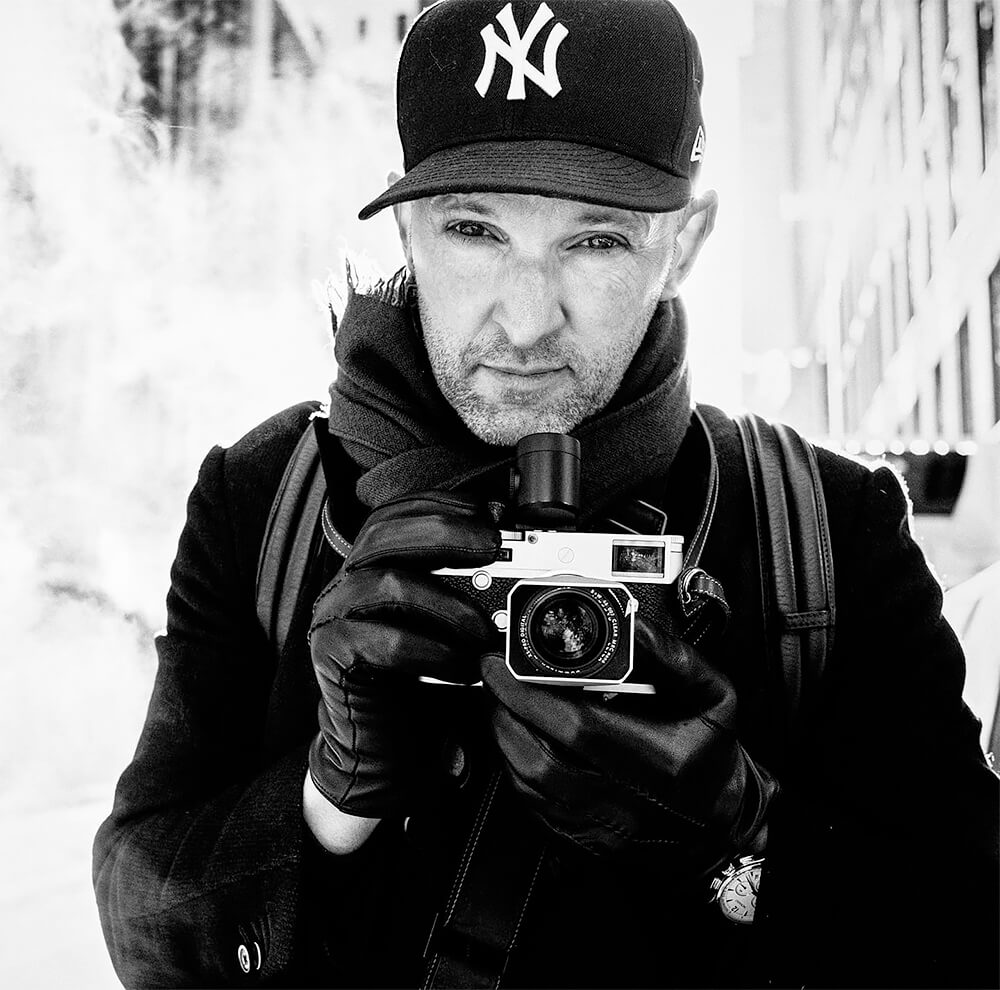The British-born, New York-based photographer Phil Penman has documented the ever-changing scene of New York City’s streets for more than 25 years. In his career as a news and magazine photographer, with a large body of work in such publications as The Guardian, The Independent, The New York Review of Books, among others, he has photographed major public figures and historical events. In particular, his reportage following the September 11, 2001 terrorist attack on the World Trade Center has featured on NBC’s Today show, as well as on the BBC, History Channel, and Al Jazeera, and his images have been included in the 9/11 Memorial and Museum’s archives.
His work covering the pandemic lockdown in New York City has been acquired by the U.S. Library of Congress, whose collection holds work by such great Depression-era documentarians as Walker Evans and Dorothea Lange. Besides showing at Leica galleries in New York, Washington, D.C., Boston, and London, Penman’s signature street photography has appeared in international exhibitions as far afield as Venice, Berlin, and Sydney.
He also tours the world teaching workshops on photography for Leica Akademie. He was recently named among the “52 Most Influential Street Photographers,” alongside such legends as Henri Cartier-Bresson, Sebastião Salgado, Diane Arbus, and Garry Winogrand. Penman’s first book, Street, published in 2019, became a best-seller and was featured at the Museum of Modern Art in New York.
New York Street Diaries
Phil Penman shows the big city on the east coast of the USA from a side that is rarely seen, calm and tranquil. The pictures were taken partly during the great snowstorm and partly during the Corona Lockdown and are thus contemporary witnesses of the pandemic restrictions that completely turned our previously-known world upside down. Born in Great Britain (Poole, Dorset), he has been photographing the streets of New York for well over two decades. He is known, among other things, for his photographs of famous personalities such as Michael Jackson, Madonna, Jennifer Lopez or Bill Gates. When the biggest tragedy in New York's history shook the city on 11 September 2001, Phil Penman was on the spot and created unique footage of the events with his camera.
Penman knows how to capture the city in its most sensitive moments in an impressive way. He catches intimate moments in his black-and-white photographs and shows the people and streets of New York City far away from the hustle and bustle. The city life of the metropolis is presented so closely that some pictures inevitably evoke a smile in the viewer. Penman literally catapults his viewer into the scene with a refreshing directness and the feeling of really being present.
New York Street Diaries